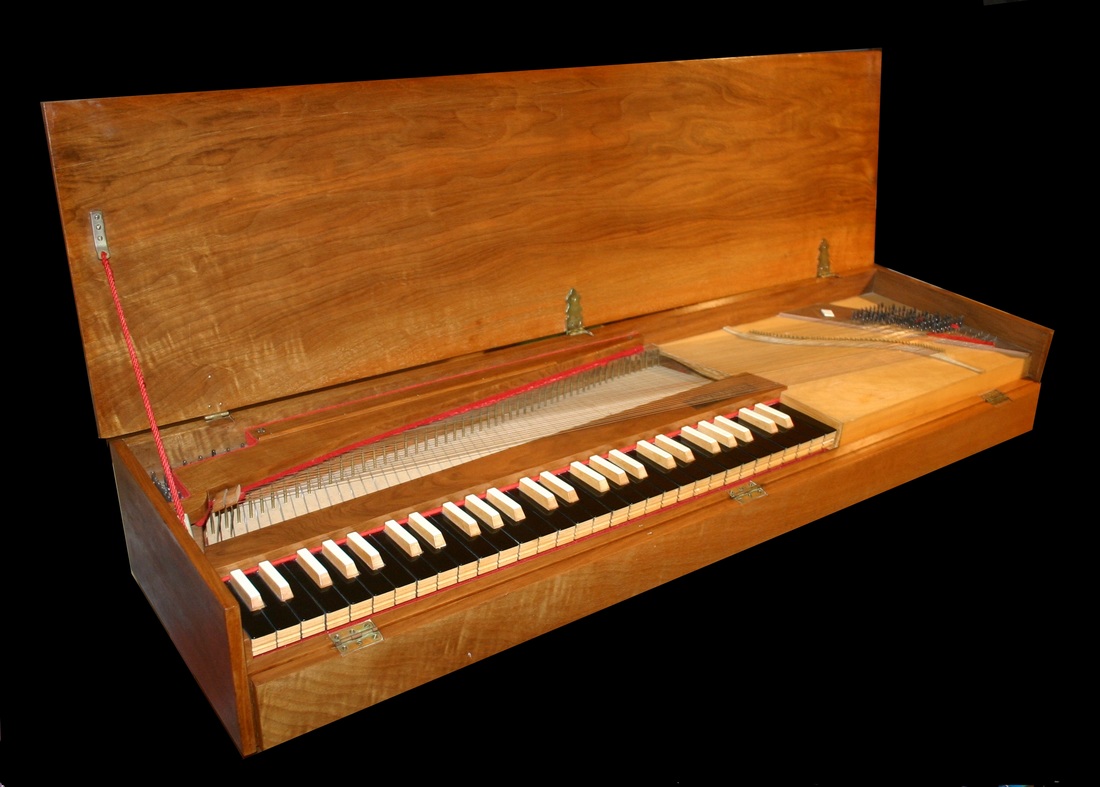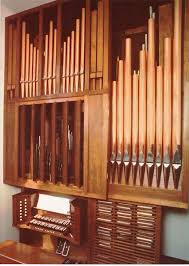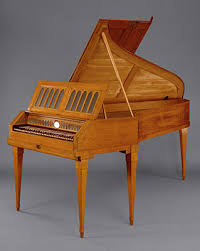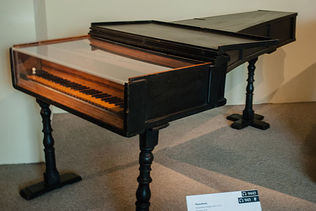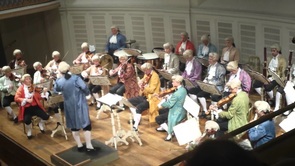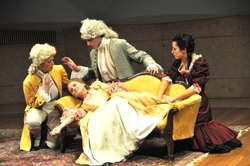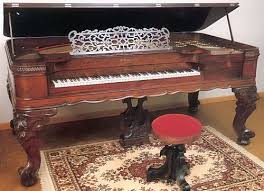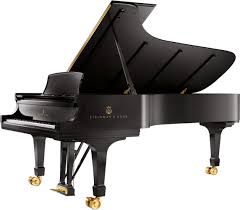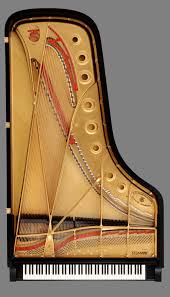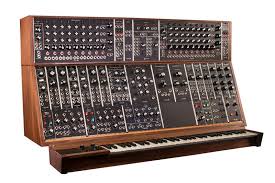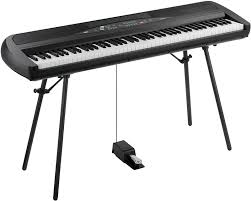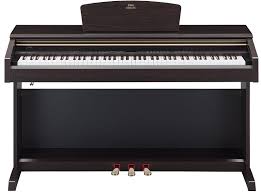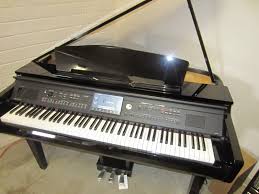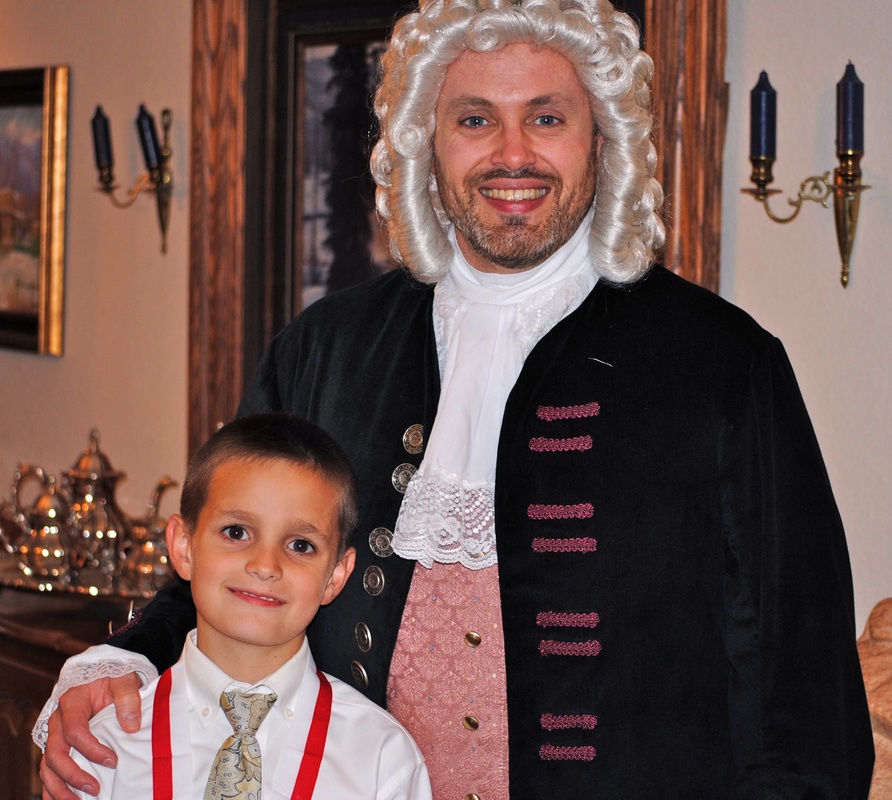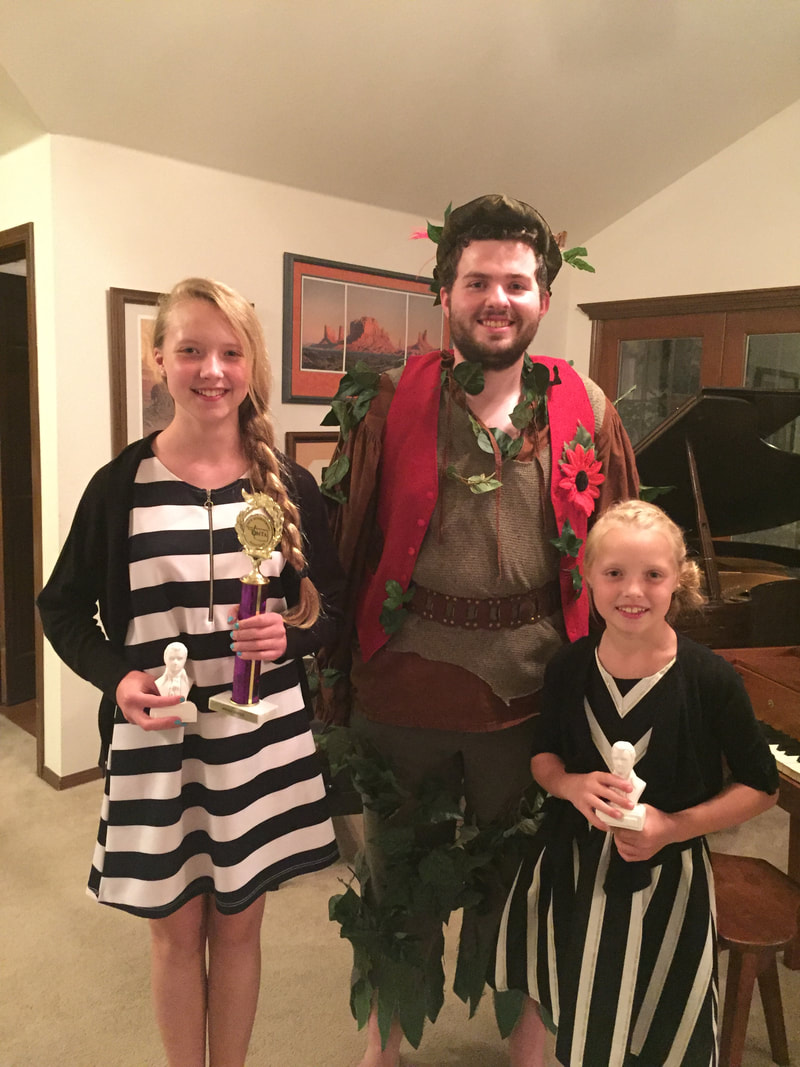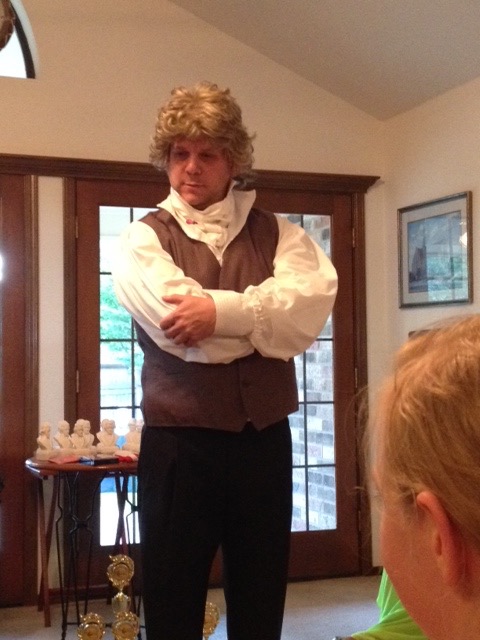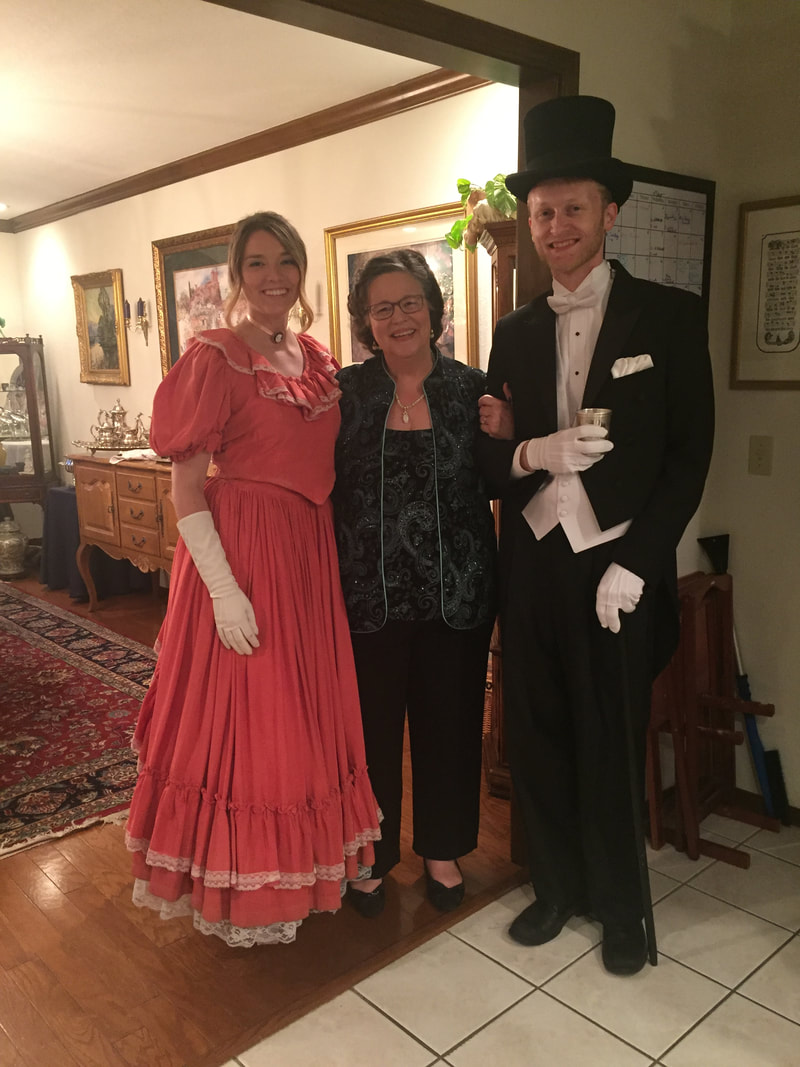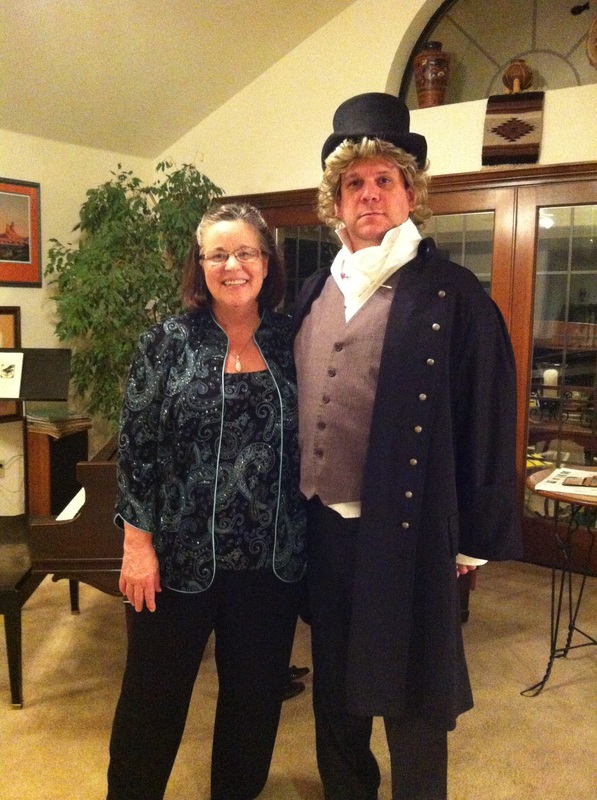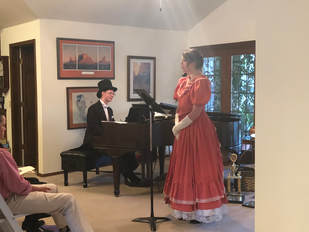2018-2019 Mystery Composer Contest
We are off and running!
Students received their first "clue" at the August Group Lessons. We discussed the list of composers I take the current year's Mystery Composer (M.C.) from, the list of former Mystery Composers and a description of the general historical periods of music. Additional clues are handed out at the October, January and February Group Lessons. The April Group Lesson is spent on the history and music of that year's Mystery Composer. As each Group Week is completed, I will post the clue in this section. See below for August's clues.
Rules of the contest are:
Prizes:
Happy Research!!
Students received their first "clue" at the August Group Lessons. We discussed the list of composers I take the current year's Mystery Composer (M.C.) from, the list of former Mystery Composers and a description of the general historical periods of music. Additional clues are handed out at the October, January and February Group Lessons. The April Group Lesson is spent on the history and music of that year's Mystery Composer. As each Group Week is completed, I will post the clue in this section. See below for August's clues.
Rules of the contest are:
- Students must do their own research. They may use the internet, the library, or books you have at home. (Early elementary students may have parental help at the computer. Parents, please do not do the work for students--let them figure out how to use the clues to search for their information needed. You may "guide" your student by asking them leading questions.)
- You must email the results of your research (no telephone conversations or texts, please) for I print the correspondence and place in your Group Notebook. In order for you to receive a correct answer you must include the following:
- Name of the Mystery Composer
- Dates of birth and death (unless still living)
- Why did you pick this particular composer? Which part of my clue did you use?
- If used, list any and all websites you searched.
- I will answer your email as soon as possible with either a "congratulations" or a "hmm.....this part is good but I need (fill in the blank)."
- There will be ties. Group lessons are held on 3 different days in the week; each group will be allowed the same amount of time for students to research and turn in the results of that research. I will say that the competition in the High School Group has been rather cutthroat in the last several years. The contest now is not for which level of prize to aim for but to see who can qualify for the grand prize in the shortest amount of time. This makes for very interesting and fun emails.
Prizes:
- Grand Prize: $20.00 Gift Certificate to Barnes and Noble
- Group Prize: $15.00 Gift Certificate to Barnes and Noble
- Honorable Mention: $10.00 Gift Certificate to Barnes and Noble
Happy Research!!
M.C. Contest WinnersWinners of the various levels of prizes will be posted on this website one week after Group Week. This will allow all students in all Groups (including those who missed Group) the same amount of time for research. Good Luck!
M.C. Winners (2018-2019). M.C. CluesAugust 2018Links to two of the clues are: List of Composers; Previous Mystery Composers.
Ages of Music
|
|
The Mozart Vienna Orchestra
|
Haydn's opera La Canterina
(The Diva) |
Romantic Period (1810 - 1910)
This era saw the perfection of the modern day piano. this instrument was enlarged and perfected in its action, pedals, frames, and sound boards. The piano now used large metal frames inside the wood casings. Concert grands were as large as nine feet long and able to produce a wide range of sound. Other pianos were square, thin and tall, or rectangular in order to fit into the homes of the now large middle class. Composing for, and playing, the organ came back in style with the improvements of wind supply and the ability to have huge, orchestral organs. Virtuoso playing, chromatic harmony, the um-pah-pah bass and idiomatic keyboard figures were the standard of the day. Leaving the courts (many "courts" were disappearing), music was performed in concert halls. Forms include program and character pieces, rhapsodies, fantasy sonatas and concertos, two-piano works, and etudes along with the ever evolving sonata, concertos, and variations.
20th Century/Contemporary/Modern (1900 - present)
The last century has seen a theme and variation on the keyboard instrument. Today we use the organ, piano, celesta, harpsichord, electronic keyboards, digital keyboards, even I-pads and I-phones and can perform on an instrument while being accompanied at the same time by that very same instrument. This is the age of experiments in harmony, tonality, and sonority. Various percussive touches, a return to motivic and polyphonic writing and complex meters are also used. Taped sounds can be used as well as "prepared" instruments. Music is performed in concert halls, churches, auditoriums, stadiums, arenas and even on our smart phones or I-Pads. The musical theatre is important as are the scores of movies (think of Phantom of the Opera or the Harry Potter series). We can also hear music of any kind and age on the radio, television, recordings, computer and, once again, our smart phones. Forms used are those of the past as well as "chance" pieces and through composed.
October 2018
The history of Western music is essentially the history of changing styles. This becomes strikingly evident with the development of polyphony in the 11th and 12th centuries; from that time onwards European music has mirrored the restlessness of the European mind in its seemingly endless search for innovation and change. History itself—wars, rise and fall of governments, famines, epidemics, and brief periods of peace and prosperity—has a huge affect on the styles of music, those who compose it, and those who perform it.
There is a pattern to the emergence, growth and eventual disappearance of any specific style of music. The earlier phase in the development of a compositional style is usually marked by a quickened pulse [how cool is this new way?!]. Then more composers start writing in the “new style” which then matures and forms become consolidated and maybe even “stodgy”. One period of music—Baroque, Classical, or Romantic, etc.—has early, middle and late stages of development. Yet strangely, in the country of M.C.’s birth, this ever constant cycle seems to have settled into a long period of calm repose which turned away new influences. Towards the end of the 17th century, however, the flood broke down the barrier and “new” music poured in. M.C. was the composer at the crossroads who became head of the movement that sought to combine the best qualities of the music of his country and that of the “new” style, a union he described as the “perfection of music.” M.C.’s music might be called “Rococo” a term used as one period of music was coming to a close.
In the 17th century, some professional positions/jobs could be handed down from father to next-of-kin, just as property was inherited—including organist and harpsichord positions. This year’s M.C. , very much a product of his time, was the most famous member of a musical dynasty stretching from the middle of the 16th century to the middle of the 19th century. At the age of 11 he inherited the position of organist at Eglise Saint-Gervais, a position he would hold for his entire life then pass on to a daughter. It was for Saint-Gervais that the young M.C. produced his first compositions: colorful organ masses written for the magnificent organ (built in 1601) still in the church today. And yes, I can personally attest organists still play the music of M.C. on that organ.
Happy research!!!
There is a pattern to the emergence, growth and eventual disappearance of any specific style of music. The earlier phase in the development of a compositional style is usually marked by a quickened pulse [how cool is this new way?!]. Then more composers start writing in the “new style” which then matures and forms become consolidated and maybe even “stodgy”. One period of music—Baroque, Classical, or Romantic, etc.—has early, middle and late stages of development. Yet strangely, in the country of M.C.’s birth, this ever constant cycle seems to have settled into a long period of calm repose which turned away new influences. Towards the end of the 17th century, however, the flood broke down the barrier and “new” music poured in. M.C. was the composer at the crossroads who became head of the movement that sought to combine the best qualities of the music of his country and that of the “new” style, a union he described as the “perfection of music.” M.C.’s music might be called “Rococo” a term used as one period of music was coming to a close.
In the 17th century, some professional positions/jobs could be handed down from father to next-of-kin, just as property was inherited—including organist and harpsichord positions. This year’s M.C. , very much a product of his time, was the most famous member of a musical dynasty stretching from the middle of the 16th century to the middle of the 19th century. At the age of 11 he inherited the position of organist at Eglise Saint-Gervais, a position he would hold for his entire life then pass on to a daughter. It was for Saint-Gervais that the young M.C. produced his first compositions: colorful organ masses written for the magnificent organ (built in 1601) still in the church today. And yes, I can personally attest organists still play the music of M.C. on that organ.
Happy research!!!
January 2019 [tba]
February 2019 [tba]
********************************************************************************
|
|
Some Past M.C.s
|
May 22, 2017
Papageno [from W.A. Mozart's "Magic Flute"] with Vivian and Elsie McNeely. Mozart was the 2016-2017 Mystery Composer. |
May 19, 2018
Clara Schumann, Mrs. P, and Robert Schumann, 2017-2018's M.C. |
May 21, 2018
Clara Schumann singing from cycle of songs written for her by Robert Schumann. |
Proudly powered by Weebly
